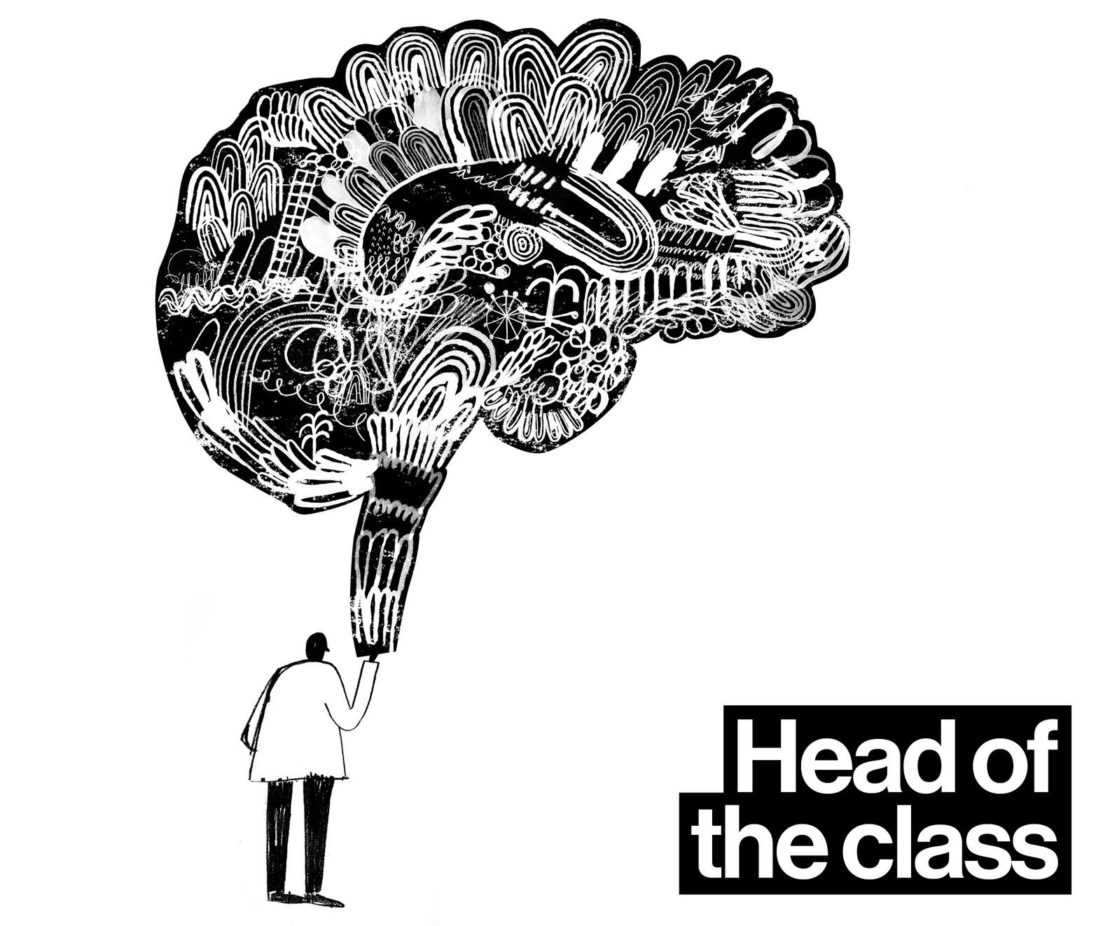
Head of the class
There's a riddle at the heart of every school classroom. The teacher is there to teach, and the pupils to learn. But learning is invisible and entirely personal. Tests, exams, homework and school inspections give a snapshot of how pupils can perform, but they will always be an indirect proxy for learning. No one can know for sure what chunks of knowledge and which skills children take with them and use in the real world beyond the school gates.
The educational researcher Graham Nuthall has spent 40 years tackling this enigma head on. He approached classrooms in New Zealand as a Martian might. He wired them for sound, installed video cameras, sat in on countless lessons and interviewed and tested hundreds of pupils. With an open mind he observed the cultural rituals of the classroom. He recorded the minutiae of what the teachers said to the pupils, and what the pupils whispered to one another. His cameras rolled for months on end.
Nuthall crunched the mountains of data. Some of his findings were simple and useful; for example, that students had to run up against a piece of information at least three times for it to lodge reliably in their memory. Other insights were more complex and unsettling. For instance, when presented with identical material, each student retained a unique slice of that knowledge. On the subject of tests, Nuthall was clear: tests tell you much more about pupils' motivation to succeed than they reveal about what they have actually learned.
Yet despite his fanatically detailed scrutiny, Nuthall came up against a barrier of flesh, blood and bone. He couldn't actually see what pupils had learned. As he said in a 2001 lecture: "It seemed that unless we could get inside the minds of students, we would never understand exactly how learning occurred."
Neuroscience – the formalised study of the form and function of the brain – is alive with discovery. As we learn more about how the brain works, there is a growing clamour to apply this new knowledge to education. A solid, evidence-based grasp of how the brain learns, and why sometimes it doesn't, could suggest more effective teaching strategies. The promise is huge.
In recent years, a new field of enquiry has exploded onto the scene. Referred to variously as 'educational neuroscience', 'neuroeducation' and 'mind, brain and education', the new discipline doesn't even have a broadly accepted name. Research centres have opened, rich funding streams bubbled up and university courses appeared, all reaching for ripe fruits from the tree of neuroscience to satisfy the educators' appetite for effective teaching strategies.
So, if it eluded Nuthall, can the learning process be seen in living brains by neuroscientists? If brain scans can pinpoint pupils with different learning styles and abilities, can we use that information in schools?
Some would say yes. In a study published earlier this year, scientists at the Carnegie Mellon University in Pittsburgh taught a group of students about the inner workings of familiar household objects. The physics lessons took place within the rumbling belly of an fMRI brain scanner. As the students learned about the simple mechanisms, the neuroscientists recorded a movie of the neural activity that danced and flickered across their brains.
Initially, as they studied technical diagrams and moving parts, the action was skewed towards the back of the brain, mainly in areas known to process visual information. As they understood more about how and why the components interacted, brain activity rippled out into a more diverse network of brain regions. Eventually, the students made sense of the mechanism and started to imagine themselves using it. Prominent activity shifted again, mostly into the brain's frontal cortical areas. Just by looking at the pattern of brain activity, the scientists could tell which mechanism the brain in question was thinking about: the innards of a set of bathroom scales, a fire extinguisher, a trumpet or the brakes of a car.
This experiment is undoubtedly an impressive technical feat, but is it actually useful for teachers and educators? The scientists who did the work clearly think it might be. They end their report by saying that this kind of research "can lead to better instructional methods as well as a potentially novel way to assess both the learning process in the student and the instructional technique of the teacher".
Unless we could get inside the minds of students, we would never understand exactly how learning occurred

At Oxford University's department of education, professor of developmental neuropsychology Dorothy Bishop is delivering a talk on educational neuroscience. Her tone is playfully irreverent, her message laced with well-reasoned scepticism.
She flashes up a graph. The trend line soars upwards to a peak, then dives back down before finally struggling back up to a low plateau. It's a version of the 'hype cycle' the American IT research company Gartner came up with to describe the invention, overhyping, development and eventual maturation of new technologies. For Bishop, educational neuroscience is moving rapidly towards the 'peak of inflated expectations'. By implication, the 'trough of disillusionment' is just over the hill.
According to Bishop, when it comes to education, “most of the brain-focused fMRI studies are on a hiding to nothing”. The mental maps these techniques generate are inherently noisy and vague; and even if they worked as promised to reliably predict whether pupils had transformed naked information into well-formed, flexible concepts, brain scanning is too unwieldy, expensive and intrusive for widespread use in education.
Bishop is not saying scientific study of the brain and mind will not have an impact on education. But she thinks psychologists, who use human behaviour to infer how mental processes work, have much more to offer the education world. Bishop challenges neuroscientists, for all their claims, to come up with workable educational interventions that psychologists could not have arrived at more directly and cheaply without needing to scrutinise the brain itself.
Let's look at the current crop of research programmes in educational neuroscience. Last year the UK’s biggest biomedical charity, The Wellcome Trust, teamed up with the Education Endowment Foundation (EEF) to fund six research projects to the tune of £6.5m.
Their funding criteria are clear: "Projects will only be funded if there is an explicit causal hypothesis relating a finding in neuroscience to a novel [educational] intervention." Bishop points out that neuroscience barely features in the winning projects' summaries, with brain imaging only mentioned in one. The rest sounds more like psychology.
Lia Commissar of the Wellcome Trust, who project manages their educational neuroscience work, says that is not the case. She acknowledges there is an interplay between the neuroscience and psychology literature in the background to some of the funded projects, but in every case the 'neuroscience is the trigger to change things'.
Take a project called Spaced Learning. It is described as 'a method of teaching that delivers a unit of work three times interspersed with alternative activities'. But this technique isn't new; nor was it discovered by neuroscientists. Spaced learning effects were first described by a pioneering psychologist working alone at the end of the 19th century.
In a series of experiments as breathtakingly thorough as they must have been eye-wateringly tedious, Hermann Ebbinghaus spent years of his life learning, forgetting and relearning long lists of nonsensical syllables. He found surprisingly consistent patterns in the way his memory worked. One of these was the spacing effect. Repetition is crucial for learning, Ebbinghaus said, but memories form more readily and durably if the repetitions are spaced out in time, rather than massed together.
Psychologists have known about the spacing effect for 130 years. So why are the Wellcome Trust and EEF funding a spaced learning intervention in the name of educational neuroscience?
It turns out that neuroscientists stumbled across the spaced learning effect independently of the psychologists.
For decades, they have been trying to pin down memories in their physical form. They have examined simple reflexes in sea slugs, crayfish and cats and probed and stimulated the neurons in thin slices of rat brain, kept alive in Petri dishes.
The key principles that emerged from these reductive systems were that lasting memories are not held in single neurons but in circuits of interlinked cells. As new memories form, the brain creates new circuits, or strengthens existing ones, by remodelling synapses (the physical links that allow information to flow between neighbouring neurons). For this to happen, neurons must build new proteins from scratch, and slot them into place at the correct synapse. This takes time and energy. So before a neuron makes the investment, it has to know that the stimulation it is receiving is meaningful, rather than a one-off blip.
By focusing on the simplest memory systems, neuroscientists figured out exactly how neurons sift the signal from the noise. They then made firm predictions about how to optimise the process of stamping new memories into the brain.
Echoing Ebbinghaus, the neuroscientists discovered that repeated stimuli, with precisely timed gaps, are one of the most reliable ways to convince neurons that an event is memory-worthy. The growing understanding of the timetable of events that neurons go through to build and reinforce synapses informs exactly how long the gaps should be.
So spaced learning effects have firm roots in both psychology and neuroscience; but the two sciences' different perspectives mean they disagree about how best to apply it.
It may seem a huge leap to extrapolate from the Petri dish to the school desk, but the insights from the psychologists are also fundamentally abstract. As David Didau, an ex-teacher at Wellington College and a blogger and author, reminded me: "People treat Ebbinghaus' graphs like universal truths. But he was learning gibberish. His calculations, albeit very interesting, don't tell us anything directly useable in education, they merely hint at likelihoods and possibilities."
The Wellcome/EEF-funded project, led by the Hallam Teaching School Alliance, wants to take a more rational approach to spaced learning. They will start with the predictions made by the neuroscientists and build out from there. They will discover whether insights gained from stimulating neurons in the rarefied laboratory environment can meaningfully be applied to real-world learning.
If spaced learning works in schools – and the early signs are promising – it is impossible to avoid the fact that it hinges on repetition. Repetition is boring. Can neuroscience address the challenge of keeping pupils motivated to learn?
Dr Paul Howard-Jones, another recipient of Wellcome/EEF funding, thinks it can. He bases his idea on humanity's fondness for games. A roll of the dice determines whether you land at the foot of a ladder or in the jaws of a snake. For Howard-Jones, linking rewards to a strong element of uncertainty is what keeps us hooked.
Neuroscientists have shown that dopamine levels in the midbrain region increase as we anticipate a reward. They rise even more if an element of blind chance determines whether we actually get the reward. Dopamine uptake in this specific context can lead to heightened emotional responses and increased engagement. Moreover, tickling the brain's reward circuitry in this way can enhance the formation of new memories.
Interviewed recently on BBC Radio 4, Howard-Jones acknowledged that most previous attempts at introducing learning games to schools have been a damp squib. Children tend to ask menacingly: “Is this supposed to be fun?” Even so, he's optimistic his latest strategy will build more directly from the neuroscience and yield better results in the classroom.
If brain scans can pinpoint pupils with different learning styles and abilities, can we use that information in schools?

If introducing elements of gambling to school lessons makes some readers feel a bit uneasy, how about using small electrical currents to enhance pupils' mental faculties?
A growing number of enthusiasts are looking for DIY fixes to tune up their cognitive capabilities with home-made transcranial electric stimulation (tES, a group of non-invasive brain stimulation techniques that includes tDCS (Direct Current Stimulation) and tRNS (Random Noise Stimulation)). Even the sceptical Dorothy Bishop wonders whether tES is one area where neuroscience might one day find a useful niche in the classroom. It's certainly something psychologists wouldn't have tried without neuroscientists first laying the foundations.
Bishop's colleague, Professor Roi Cohen Kadosh, is at the forefront of tES research in the UK. In Oxford's department of experimental psychology, he lets me peek into a room where an experiment is under way. Three students sit at computer consoles. They're wearing black neoprene skull caps studded with an array of small holes, some plugged by electrodes delivering low currents through the scalp to precise regions of the cerebral cortex.
Cohen Kadosh explains that nothing is being zapped in his subjects' brains. In fact, most people only sense a gentle tingling, which they usually stop feeling after about 30 seconds. But some of the cognitive effects of this stimulation can last much longer.
Much of his work focuses on mathematical cognition. Numeracy really matters: "You can predict your socioeconomic status 35 years later based on your numerical skills aged seven," explains Cohen Kadosh. To date, most of his research has focused on university students rather than school pupils. He has shown that direct stimulation of brain areas, in combination with maths training, leads to significant gains in learning and maths performance. The effects can last for up to six months.
But there’s a long way to go before electrical stimulation could see routine classroom use.
For a start, we need to examine the side-effects. Not the physical effects – he's confident it's safe if done properly – but the cognitive ones. Does enhancing one mental faculty come at the cost of depleting another? While Cohen Kadosh doesn't think this trade-off is inevitable, he saw precisely that effect in a study he published last year.
Not everyone responds to tES in the same way. Identical stimulation, during identical learning tasks, can lead to diametrically opposite effects. In a set of experiments from 2014, low functioning individuals benefited from the tES, whereas the performance of those starting with greater cognitive capacities actually deteriorated. Perhaps this is why Cohen Kadosh doesn't rely on tES – he says he uses it for experimental purposes but does not try to use it in a consistent way to improve his abilities. "At the moment, I’m happy with what I have. I try the natural way," he says.
As well as wiring up their scalps, the brain hackers' quest to augment their grey matter leads them to experiment with the effects of pharmaceuticals on the brain. The smart drug of the moment appears to be modafinil.
Modafinil was developed in the 70s by French neurophysiologist Michel Jouvet as a treatment for narcolepsy. Since then, neuroscientists have ascertained that modafinil affects all the brain's major neurotransmitter pathways, within many brain regions. A recent study from Professor Barbara Sahakian's Cambridge University team showed that a single dose of modafinil could significantly boost participants' working memory and their ability to plan and make decisions. Moreover, the participants on the drug actually enjoyed tackling the demanding cognitive tasks the investigators set them. This is just one of a raft of academic papers hinting at the huge potential modafinil may have to enhance focus, motivation and recall.
Unsurprisingly, thanks to modafinil’s well-publicised promise, Britain's universities are awash with the stuff. Precise numbers are hard to gauge, but an informal survey by student news website The Tab reported regular use by at least one in five students. If it is so common in higher education, it seems inevitable that it has also entered the school system.
But if modafinil works as promised, what's to be scared of? Surely the drug-testing procedure would have picked up serious side-effects if they existed? Mightn't drugs like modafinil, whose neurochemical effects are relatively well understood, be a useful tool to help pupils stay on task and motivated in a world full of distraction?
The most glaring problem is that the clinical trials for modafinil were done on adult populations suffering from narcolepsy, a serious medical problem. In this context, the threshold for calling side effects unacceptable will be set much higher. Moreover, the brain is under constant construction and redevelopment throughout childhood and adolescence. No one has studied the physical or cognitive effects of modafinil on juvenile brains.
In fact, it's hard to imagine an ethics committee approving a large and thorough trial of a performance-boosting drug on a junior population. Even if neurochemists succeed in coming up with a genuine, risk-free, cognitive-enhancing drug, society needs to think very hard about the ethics of using it in the context of education.
That day is still a long way off. In fact, the jury is still out on the effectiveness and safety of all the neuroscience-based interventions you've read about here. An EEF-commissioned review published last year focused on 18 areas where neuroscience might have an impact on educational practice; and concluded that, so far, little neuroscience has directly affected teaching in UK classrooms.
Yet if you ask a teacher, they are likely to tell you that at least some of what they do comes directly from brain research. According to a recent Wellcome Trust survey, 91 per cent of teachers say that their understanding of neuroscience affects their teaching practice. There is a massive disconnect between what the educational neuroscientists think and what the teachers on the frontline of education say.
This could mean that misinterpreted, garbled or plain wrong insights from brain science are being used to usher untested, ill-conceived and expensive interventions into the classroom.
Take Brain Gym. This slickly packaged and pricey suite of in-class activities took firm root in hundreds of UK schools back in the noughties. Dr Ben Goldacre, who spearheaded an attack on Brain Gym back in 2003, describes it as "a series of elaborate physical movements with silly pseudoscientific justifications: you wiggle your head back and forth because that gets more blood into your frontal lobes for clearer thinking; you contort your fingers together to improve some unnamed 'energy flow'." (See Jeremy Paxman humiliate Brain Gym's bumbling inventor on BBC's Newsnight here.)
Thankfully Brain Gym seems to be in decline: 39 per cent of Wellcome-surveyed teachers have used it in the past, down now to 16 per cent. But that is still a lot of teachers peppering their lessons with unsubstantiated use of imaginary 'brain buttons' and the like.
Other 'neuromyths' of the classroom are even more pervasive. 76 per cent of the teachers Wellcome questioned claim to use 'learning styles'. This is the idea that children absorb information best when teachers deliver it according to pupils' responsiveness to three available styles: visual, auditory and kinaesthetic. Nearly one in five teachers think it is helpful to characterise pupils as either right- or left-brain learners. No neuroscientific evidence supports either these crude attempts at pigeonholing students or their effectiveness as teaching tools.
Educators, it appears, have a big appetite for teaching interventions with a basis in brain science. This shouldn't surprise us. Neuroscientific explanations are seductive, even when wrong. A classic 2008 study showed that gratuitous neuroscientific language made descriptions of psychological phenomena more convincing. A study published this year found that, of the jargon from all the hard sciences, the language of neuroscience beat the others to make explanations based on it uniquely compelling.
So teachers have a huge responsibility to get the science right, but not many have the time, inclination or skills to weigh up the primary evidence behind the proposed interventions that land on their desks.
If the neuroscience is robust and the idea translatable, however, it makes sense for teachers, educators and psychologists to try out new evidence-based approaches in the classroom.
Take Teensleep, the Wellcome/EEF-backed research led by Professor Russell Foster, which is testing the idea that delaying school start times for adolescents will improve academic achievement. Cynics may point out that we don't need neuroscience to tell us that teenagers can be dozy and unresponsive in the morning. But neuroscience can tell us why a good night's sleep is so crucial for memory consolidation, information processing and creativity. It can also show that most teenagers have a delayed sleep/wake cycle compared to adults. By bringing robust neuroscientific evidence into play, educators have the authority to see if changing the status quo can help.
Would drugs whose neurochemical effects are relatively well understood be a useful tool to help pupils in a world full of distraction?

No one should be looking to neuroscience to provide quick fixes or shortcuts to effective learning. If the teaching trials currently underway come off well, neuroscientists may bring some useful tools to the table. They can make the process of learning a little less mysterious, but they will not take the effort out of it. Electric stimulation will do nothing without the cognitive training that Cohen Kadosh pairs it with. Spaced learning may help teachers to instill a bedrock of facts in their students' minds fast, but in doing so they clear space in the day for more challenging, creative and inspiring learning.
None of this will be news to more reflective members of the teaching profession. Caroline Creaby, assistant headteacher at Ofsted outstanding-rated Sandringham School, says: "You want things to be hard for kids. You want them to think carefully and to think hard." David Didau builds on this point. On his blog and in his forthcoming book What If Everything You Knew About Education Was Wrong? Didau cites Robert A Bjork's notion of 'desirable difficulties' which, he writes, "will slow down performance but lead to long term retention and the transfer of knowledge between domains."
The transformative potential of hard work is perhaps most clearly crystallised by research into physical exercise. A growing body of work, mostly still focused on lab animals, shows that sustained periods of physical activity have profound and measurable improving effects on the brain.
In a project called Fit to Study, Professor Heidi Johansen-Berg is testing the hypothesis that increases in physical activity will improve school children's academic achievement. With the help of teachers, sports psychologists, the EEF and 15,000 year 8 pupils, she is spearheading a study large and robust enough to deliver meaningful results. For her, the process has been 'disconcerting at times' and 'much more difficult than simply doing science', but ultimately 'fascinating'.
Will educational neuroscientists deliver on their bold promises? In a 2006 follow-up to his sceptical essay from 1997, the philosopher John T Bruer wrote: "Eventually we will be able to bridge neuroscience… with education, but I am convinced that all of these bridges will have a least one pier on the island of psychology."
Bruer's bridge analogy is apt in reminding us that most bridges carry two-way traffic. Neuroscientists and psychologists who are serious about applying their research in schools must listen hard to the insights of the travellers returning from the shores of education.
By 2018 the results of Fit to Study and the other Wellcome/EEF-funded trials will be in and we'll find out whether the latest crop of bridge-builders can skirt the 'trough of disillusionment' to deliver useful innovations to the classroom. Performance may be shown to have improved. But we'll still be wondering what pupils have actually learned.